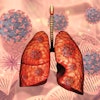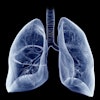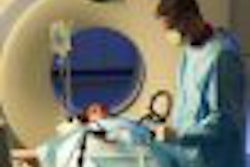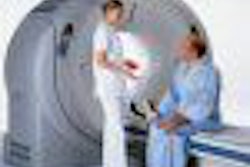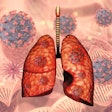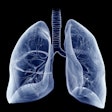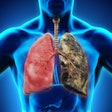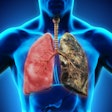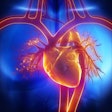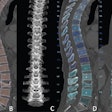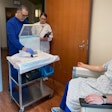A massive CT screening study of smokers and former smokers has concluded that annual CT screening detects curable cancers, while suggesting that survival rates improve markedly when the tumors are resected.
Dr. Claudia Henschke and colleagues from the Weill Medical College of Cornell University in New York City report the results of the International Early Lung Cancer Action Program (I-ELCAP) today in the New England Journal of Medicine.
The original ELCAP study found that 80% of those diagnosed with lung cancer in annual CT screening exams had stage I cancer, according to the authors. "The question remains, however, whether early intervention in such patients is sufficiently effective to justify screening large asymptomatic populations who are at risk for lung cancer," they wrote (NEJM, October 26, 2006, Vol. 355:17, pp. 1763-1771).
To address this question, the large collaborative study screened and followed 31,567 asymptomatic individuals at risk for lung cancers between 1993 and 2005. Participants were examined at academic centers and community hospitals in Japan, Europe, Israel, and China. The population consisted mostly of smokers and former smokers (n = 26,139), along with people who had been exposed to secondhand smoke (n = 3,738), and a few in Japan who reported occupational exposure to substances such as asbestos and chemicals that increased their risk (n = 1,690).
In addition, 27,456 annual screenings were conducted seven to 18 months later on those without a positive finding at the baseline exam. A positive result at baseline was defined as a solid or partly solid noncalcified nodule 5 mm or larger, at least one nonsolid noncalcified nodule 8 mm or larger, or a solid endobronchial nodule. For annual screening, any new noncalcified nodule regardless of size was considered positive. The median age at baseline was 61 years (range 40-85) and the median number of pack years smoked was 30 (range 0-141).
Among the baseline screening participants, 13% had positive findings that required immediate further workup in the form of a biopsy, and 5% of those who underwent annual screening required immediate workup.
For nodules 5-14 mm in diameter seen at baseline screening, follow-up CT was performed at three months; nodules showing growth were referred for PET or fine-needle aspiration biopsy.
"We estimated the 10-year lung cancer-specific survival rate among participants with clinical stage I lung cancer that was detected on CT screening and diagnosed by biopsy, regardless of the type of treatment received, and among those who underwent surgical resection of clinical stage I cancer within one month," they wrote. "A pathology panel reviewed the surgical specimens obtained from participants who underwent resection."
A total of 484 participants were diagnosed with lung cancer, including 405 at baseline, 74 at annual screening, and an additional five participants who received interim diagnoses of lung cancer following the development of symptoms within 12 months after their baseline exams, the researchers reported. The operative mortality rate was 0.5%. Eighty-five percent of those diagnosed had stage I lung cancer. The median tumor diameter was 13 mm at baseline screening, and 9 mm for tumors detected at the annual exam.
In all, 412 of the 484 participants diagnosed with stage I lung cancer underwent resection, 57 received radiation chemotherapy or both, and 16 received no treatment, the team reported.
Among 302 participants with stage I cancer who underwent resection within a month of diagnosis, the five-year survival rate was 92%. All eight participants with stage I lung cancer who were not treated died within five years of diagnosis.
"CT screening according to the I-ELCAP regimen can detect clinical stage I lung cancer in a high proportion of persons when it is curable by surgery," the authors wrote. "In a population at risk for lung cancer, such screening could prevent some 80% of deaths from lung cancer. In comparison, in the United States at present, annually approximately 173,000 persons are diagnosed with lung cancer and 164,000 deaths are attributed to the disease, so that approximately 95% of those who are diagnosed with lung cancer die from it."
The lung cancer detection rates among participants 40 years and older (1.3% at baseline CT and 0.3% on annual screening) were slightly higher than breast cancer detection rates among women 40 and older at baseline (0.6% to 1.0%) and annual screening (0.2% to 0.4%), they added. The lung cancer detection rates were even higher among current and former smokers 60 and older: 2.7% at baseline and 0.6% at annual screening.
"The cost of low-dose CT is below $200, and surgery for stage I lung cancer is less than half the cost of late-stage treatment," the team wrote. "Using the original ELCAP data and the actual hospital costs for the workup, we found CT screening for lung cancer to be highly cost-effective."
Commentary on I-ELCAP
The widespread use of screening methods to detect breast, colon, cervical, and prostate cancer accounts for at least some of the reduced mortality from these diseases compared to that of lung cancer, Dr. Michael Unger from the Fox Chase Cancer Center in Philadelphia wrote in an accompanying editorial.
"Nevertheless, in 1996, the U.S. Preventive Services Task Force made a recommendation against screening for lung cancer," he wrote.
Henschke and her team contribute substantial new information on the management of screening-detected stage I lung cancers with the present study, while reporting a survival rate among patients who underwent resection that is similar to that of patients with resected early-stage breast cancers, Unger wrote.
The trial examined only high-risk individuals rather than a population-based cohort, and "was a systematic case-control observational study, not the gold standard randomized trial," Unger noted. "Nevertheless, before the I-ELCAP study we lacked documentation of the results of a detection test combined with planned management and long-term follow-up."
In addition, each institution specified its own enrollment criteria, which may have affected the detection yield but not the other test data, he wrote. Another study limitation is the single-modality approach -- no single test or biomarker can provide unequivocal information about tumor biology, Unger noted, although biopsied and resected tumors underwent pathological evaluation.
Without additional biological information it is unknown "whether biases such as lead time and overdiagnosis could have been introduced in the final analysis of mortality," Unger wrote. Tumor growth rates and response to therapy are also unknown. CT lacks sensitivity for the detection of centrally located tumors or those located in the airway. The cost-effectiveness of CT screening is an unanswered question, and additional research will be needed, he added.
Notwithstanding these limitations, however, the study by Henschke et al "is a welcome salvo in the long struggle to reduce the tremendous burden of lung cancer on society," Unger wrote.
By Eric Barnes
AuntMinnie.com staff writer
October 26, 2006
Related Reading
Chest x-ray lung CAD reimbursement picks up, October 24, 2006
Strict protocol increases efficacy of CT screening for lung cancer, July 18, 2006
Mayo Lung Project: Lung cancer screening leads to overdiagnosis, June 9, 2006
CT screening identifies curable lung cancers, February 14, 2006
I-ELCAP data suggest need to work up secondary lung lesions, January 9, 2006
Copyright © 2006 AuntMinnie.com
